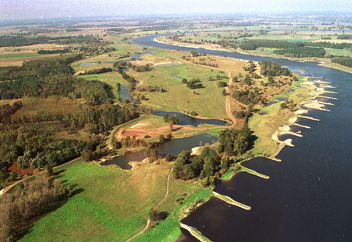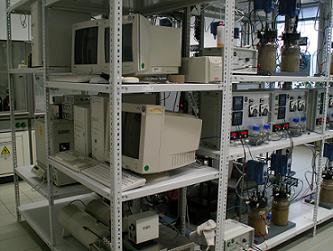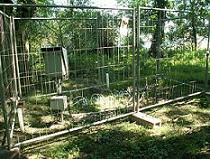Integrated project to evaluate impacts of global change on European freshwater

Project leadership: PD Dr. Klaus Henle
Staff: Christiane Schulz-Zunkel, Mathias Scholz
Funding: 6. Rahmenprogramm der Europäischen Union
Duration: Februar 2004 - Januar 2009
Introduction
Euro-limpacs is an integrated project funded by the EU designed to assess the effects of future global change on Europe's freshwater ecosystems. The project is co-ordinated by the Environmental Change Research Centre, University College London and has 36 partners. The research programme is relevant to the EU Water Framework Directive and other European and international directives and protocols and supports the EU's charter on Sustainable Development.
Aims
The UFZ works in WP5: Climate - toxic substances interactions.
Aim of the scietific work is to investigate possible effects of the global climate change on three study sites typical for floodplains (levee, depression, plateau). The study site is located along the Middle Elbe region between stream-km 435-440.

Hypothesis
The investigations shall show that climate change has an affect on the chosen soil types:
a) Temperature increase lead to decreasing redox potentials in the soil suspendion. During phases of reducing conditions the dissolved amount of trace metals in the soil suspension increases.
b) Strong fluctuations between dry (oxididesd conditions) and wet (reduced conditions) periods lead to strong changes between different redox potentials. By this the amount of dissolved organic carbon (DOC) underlies intense variations (low amounts during dry periods/high amounts during wet periods). These variations may lead to changing amounts of dissolved trace metal sin the soil suspension.
Beyond, the investigations shall confirm the estimation that the three study sites may show different effects on climate change.
c) Because of the highest content of carbon in the depression it is assumed that this site is most sensitive against changes. The levee site with the lowest carbon content react only with delay, whereas the plateau site shows a reaction time between depression and levee.
Methods

In the laboratory different climate scenarios are carried out using a microcosm equipment. The microcosms are soil suspensions with water/soil ratio 1:8. During the experiments changes in the redox potential, the pH-value and the temperature are measured. Further, suspension samples are taken and analysed for trace metals, salts, and dissolved organic carbon.
Field monitoring stations are installed at the three study sites to study influences of sesonal changes on soil paramters like redox potential, soil temperature, soil moisture and water tension. Once a week soil solution samples are taken to analyse them fo rtrace metals, salts, and dissolved organic carbon.

